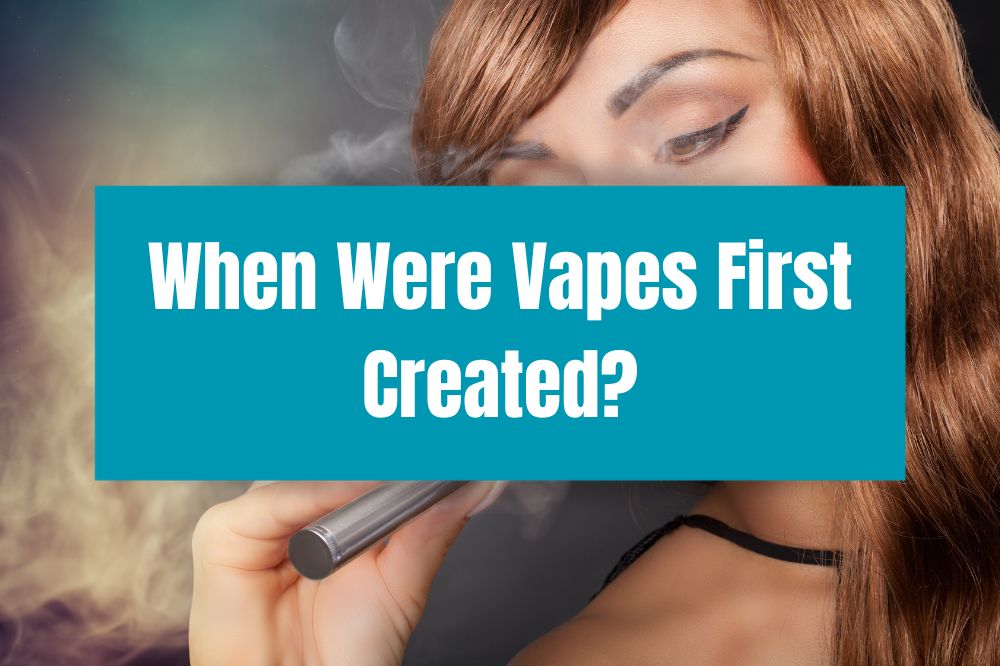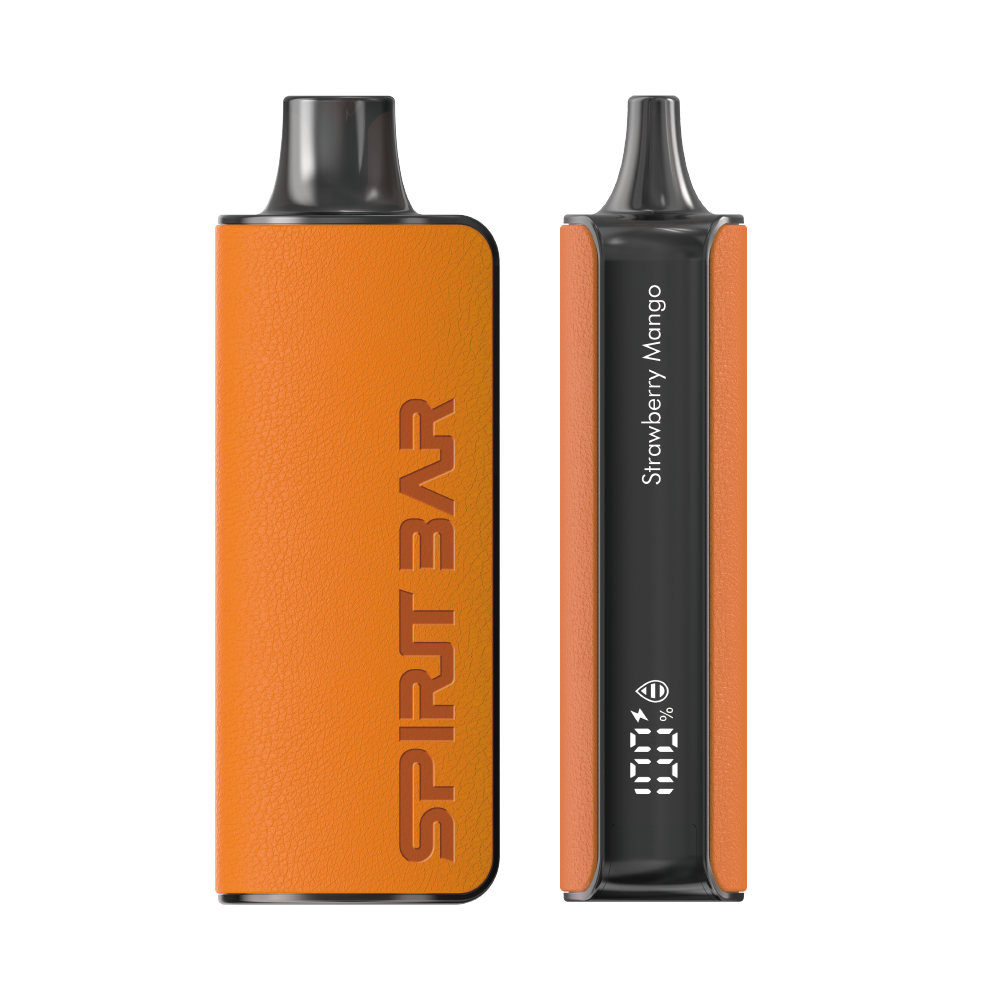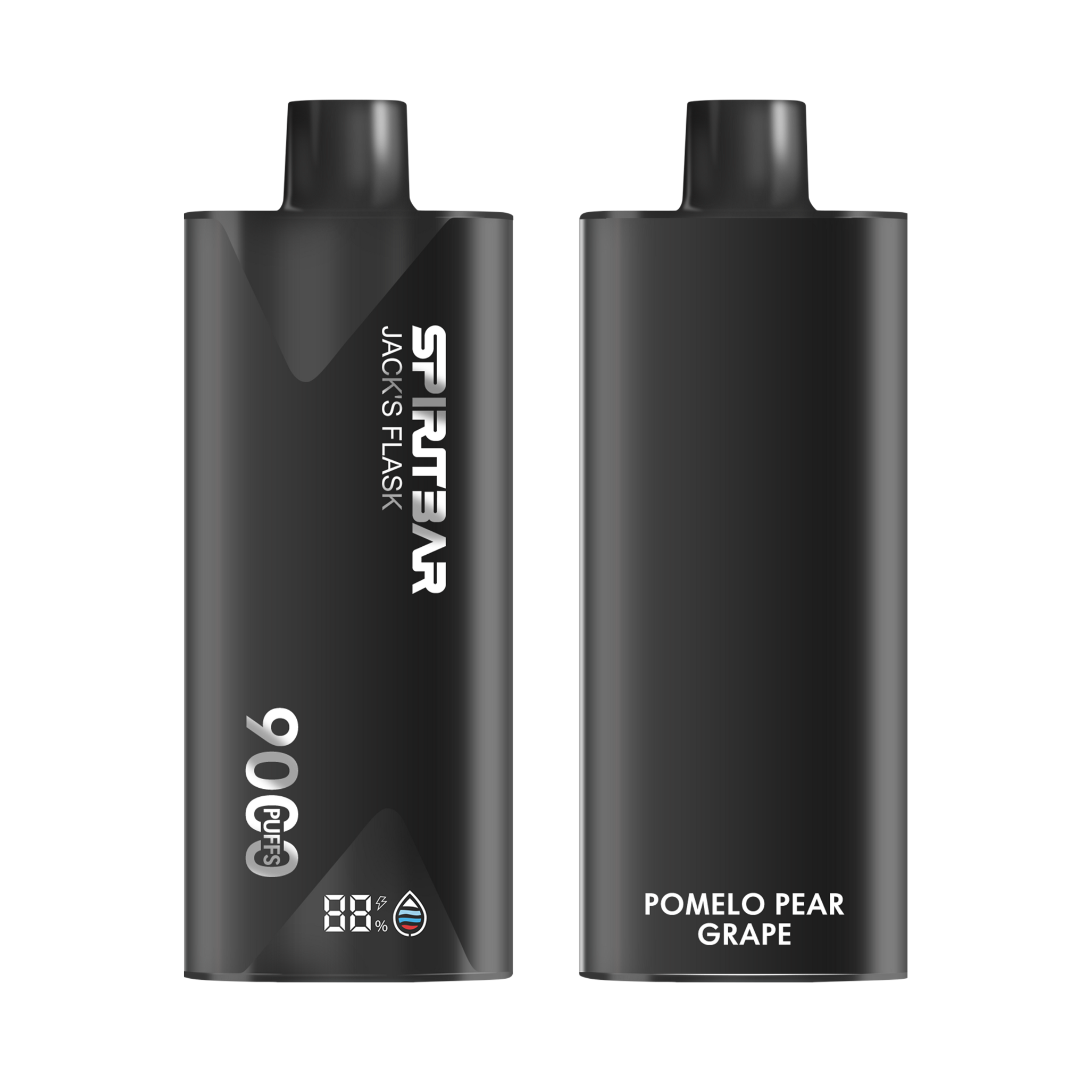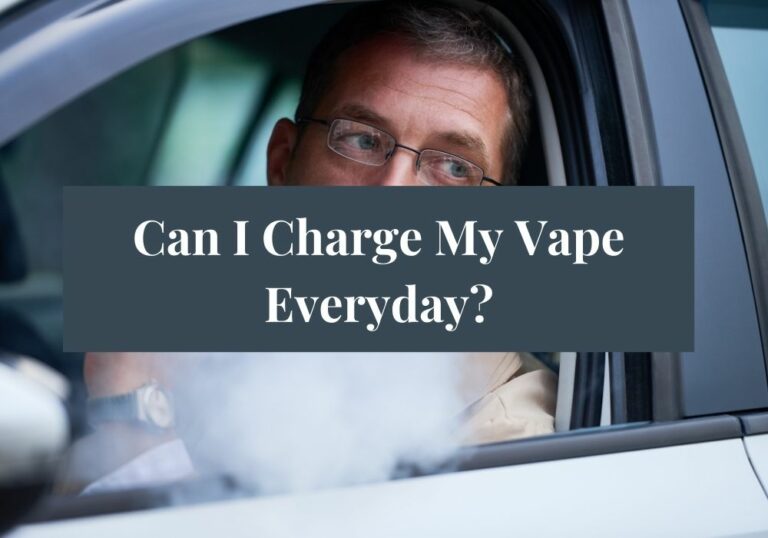When Were Vapes First Created?

If you’re curious about the origins of vaping, you’re not alone. Many people wonder when vapes were first created and who invented them. The answer is not straightforward, as there were several attempts at creating an electronic cigarette-like device over the years.
One of the earliest attempts at creating a smokeless non-tobacco cigarette was made by Herbert Gilbert in 1963. He filed a patent for his invention, which looked similar to modern e-cigarettes, but his prototypes didn’t contain nicotine and weren’t a commercial success. In the 1980s, Jed Rose, who invented the first nicotine patch, experimented with something called “distilled smoke” in his lab at UCLA. However, it wasn’t until the early 2000s that the modern e-cigarette as we know it today was invented by Chinese pharmacist Hon Lik.
The Origin of Vapes
Vaping has become a popular alternative to traditional smoking, but when were vapes first created? The history of vaping can be traced back to the early 1930s when Joseph Robinson created the first patent for an electronic vaporizer that would allow users to inhale medicinal substances. However, it wasn’t until the early 2000s that modern vaping was born.
Chinese inventor Hon Lik is credited with inventing the first e-cigarette in 2003. Lik, a heavy smoker, was inspired to create a device that would allow him to quit smoking after his father died of lung cancer. He used ultrasound technology to create a device that heated a nicotine solution and produced a vapor that could be inhaled.
SPIRITBAR Katana BP10000
- Slender, leather-textured body reminiscent of a katana handle for an authentic samurai feel
- Unique samurai-inspired e-liquid flavor - fruity yet not too sweet, with a luxurious, elegant aroma
- Powerful 650mAh rechargeable battery for extended vaping time
- Large 18ml e-liquid capacity and 10,000 puff capacity
- Advanced mesh coil and e-liquid & power display screens for optimal vaping experience
The special juice captures the essence of the samurai spirit with its rich, smoothly pulsating flavor that brings new satisfaction with every puff. The device's slender, leather-textured design evokes the grip of a samurai's katana, making this product a perfect choice for beginner vapors.
Since then, vaping has evolved significantly, with a wide range of devices and e-liquid flavors available on the market. However, the early days of vaping were not without controversy. Many health experts were concerned about the safety of vaping, and some countries even banned the use of e-cigarettes.
Despite the initial skepticism, vaping has become a popular alternative to traditional smoking, with many people using it as a way to quit smoking or reduce their nicotine intake. Today, vapes are widely available and come in a variety of shapes, sizes, and flavors.
Overall, the origin of vapes can be traced back to the early 1930s, but it wasn’t until the early 2000s that modern vaping was born. Despite initial controversy, vaping has become a popular alternative to traditional smoking, and it continues to evolve with new devices and flavors being introduced all the time.
Early Development and Design
When it comes to the early development and design of vapes, there are a few notable individuals and inventions to consider.
SPIRITBAR Jack’s Flask 9000 Puffs
- Stylish pirate flask-shaped body providing an exciting vaping experience
- Delivering up to 9000 puffs per device
- 20ml e-liquid capacity with 50mg nicotine strength for satisfying throat hit
- Specialized pirate-themed e-juice flavors for rich, swirling taste
- Premium mesh coil optimizes flavor profile for maximum vaping enjoyment
This disposable vape captures the daring spirit of the high seas with its flask styling and signature pirate e-juice flavors. The extraordinary battery life provides 9000 indulgent puffs for extended vaping pleasure. Live boldly and freely with the Jack's Flask - a legendary vaping experience fit for a pirate's adventures.
One of the earliest known devices that closely resembled the modern e-cigarette was created by Herbert A. Gilbert in the 1960s. Gilbert received a patent in 1965 (filed in 1963) and created prototypes that possibly never included nicotine. However, he failed to commercialize it, and the invention did not gain widespread recognition until decades later.
In the 1800s, Joseph Robinson created the first version of the modern vape. He developed an inhaler that could be used to heat and vaporize flavored liquids. This invention was later improved upon by Herbert Gilbert, who developed a device that could vaporize flavored liquids without combustion.
Despite these early inventions, it wasn’t until the early 2000s that vaping became popular. In 2003, a Chinese pharmacist named Hon Lik invented the modern e-cigarette. The device used a heating element to vaporize a liquid solution containing nicotine. This invention quickly gained popularity in China and eventually spread to other countries.
Overall, the early development and design of vapes involved a number of inventors and innovations over the course of several decades. While early versions of the device were created in the 1800s and 1960s, it wasn’t until the early 2000s that vaping became a widespread phenomenon.
Modern Vapes and Their Evolution
If we fast-forward to the present day, vaping has become a popular alternative to traditional smoking. Modern vapes have come a long way since the first prototypes in the 1960s. Today, there are various types of vapes available on the market, ranging from basic disposable models to high-end customizable devices.
One of the most significant advancements in modern vaping technology is the introduction of the e-cigarette. The first commercial e-cigarette was invented in 2003 by Chinese pharmacist Hon Lik [1]. Since then, e-cigarettes have become a popular choice for those looking to quit smoking or reduce their nicotine intake.
Another significant development in vaping technology is the introduction of pod systems. Pod systems are compact, easy-to-use devices that use pre-filled or refillable pods. They are a popular choice for beginners and those who prefer a more discreet vaping experience.
SPIRITBAR Katana BP10000
- Slender, leather-textured body reminiscent of a katana handle for an authentic samurai feel
- Unique samurai-inspired e-liquid flavor - fruity yet not too sweet, with a luxurious, elegant aroma
- Powerful 650mAh rechargeable battery for extended vaping time
- Large 18ml e-liquid capacity and 10,000 puff capacity
- Advanced mesh coil and e-liquid & power display screens for optimal vaping experience
The special juice captures the essence of the samurai spirit with its rich, smoothly pulsating flavor that brings new satisfaction with every puff. The device's slender, leather-textured design evokes the grip of a samurai's katana, making this product a perfect choice for beginner vapors.
In recent years, there has also been a growing trend towards customizable devices. These devices allow users to adjust various settings, such as wattage and temperature, to create a personalized vaping experience. Additionally, many customizable devices also feature replaceable batteries and tanks, making them a more sustainable option.
Overall, modern vapes have come a long way since their early prototypes. With advancements in technology and design, there is now a wide range of vapes available to suit every preference and need. Whether you’re a beginner or an experienced vaper, there’s a vape out there that’s perfect for you.
Impact on Society
Vaping has had a significant impact on society since its inception. In this section, we will discuss the impact of vaping on health perspectives and cultural influence.
Health Perspectives
Vaping has been marketed as a healthier alternative to smoking traditional cigarettes. While it is true that vaping does not produce the same harmful chemicals as traditional cigarettes, it is not completely risk-free. Vaping still exposes users to nicotine, which is highly addictive, and other chemicals that can be harmful to health.
The long-term effects of vaping are still unknown, but studies have shown that it can cause lung damage and respiratory problems. Vaping has also been linked to an increased risk of heart disease and stroke. It is important to note that vaping is not recommended for non-smokers, as it can lead to nicotine addiction.
Cultural Influence
The rise of vaping has had a significant cultural influence. Vaping has become a popular trend among young people, with many claiming it as a form of self-expression. The variety of flavors and designs of vaping devices has made it a popular accessory among young adults.
However, the popularity of vaping among young people has raised concerns about the potential for nicotine addiction and the influence of marketing on youth. Many argue that the marketing of vaping products has targeted young people, making it seem cool and trendy.
In conclusion, vaping has had a significant impact on society, both in terms of health perspectives and cultural influence. While it may be a healthier alternative to traditional cigarettes, it is not completely risk-free and should be used with caution. It is important to consider the potential risks and take steps to minimize them.
Legal Issues and Controversies
While vaping has become a popular alternative to smoking, it has not been without its share of legal issues and controversies. Here are a few notable examples:
- Age Restrictions: Many countries and states have implemented age restrictions on vaping products, similar to those for cigarettes. For example, in the United States, it is illegal to sell e-cigarettes to anyone under the age of 21. These restrictions have been put in place to prevent minors from becoming addicted to nicotine.
- Health Concerns: While vaping is often touted as a safer alternative to smoking, there have been concerns about the long-term health effects of vaping. Some studies have suggested that vaping can cause lung damage and other health problems. Additionally, there have been cases of people becoming sick or even dying from vaping-related illnesses.
- Marketing to Minors: Some vaping companies have been accused of marketing their products to minors. For example, some companies have used colorful packaging and sweet flavors to appeal to younger consumers. This has led to calls for stricter regulations on the marketing of vaping products.
- Regulatory Uncertainty: The regulatory landscape surrounding vaping is constantly evolving, which has led to uncertainty for both consumers and manufacturers. For example, in the United States, the FDA has been slow to regulate vaping products, which has led to a patchwork of state and local regulations. This has made it difficult for manufacturers to navigate the regulatory landscape and for consumers to know what they are getting when they purchase vaping products.
Despite these controversies, vaping continues to grow in popularity. As the regulatory landscape continues to evolve, it will be interesting to see how the industry adapts and changes to meet the needs of consumers while also addressing concerns about health and safety.
Future of Vaping
Vaping has come a long way since its inception, and it is showing no signs of slowing down. In the future, we can expect to see continued innovation and development in the vaping industry. Here are a few potential areas of growth and change to keep an eye on:
1. More Advanced Devices
As technology continues to improve, we can expect to see more advanced vaping devices hit the market. These devices may offer more customization options, longer battery life, and more accurate temperature control. Additionally, we may see more devices that are compatible with a wider range of e-liquids and concentrates.
2. Increased Regulation
As vaping becomes more popular, it is likely that we will see increased regulation from governments and health organizations. This may include restrictions on where you can vape, age limits for purchasing vaping products, and more stringent quality control standards for manufacturers.
3. New Flavors and Ingredients
As the vaping industry continues to grow, we may see an influx of new flavors and ingredients. Some experts predict that we will see more natural and organic ingredients used in e-liquids, as well as a wider range of flavor options.
4. More Research on Health Effects
While vaping is generally considered to be safer than smoking, there is still much we don’t know about its long-term health effects. In the future, we can expect to see more research conducted on the potential health risks of vaping. This research may help to inform future regulations and safety standards for vaping products.
Overall, the future of vaping looks bright. With continued innovation and development, we can expect to see even more exciting changes in the years to come.








